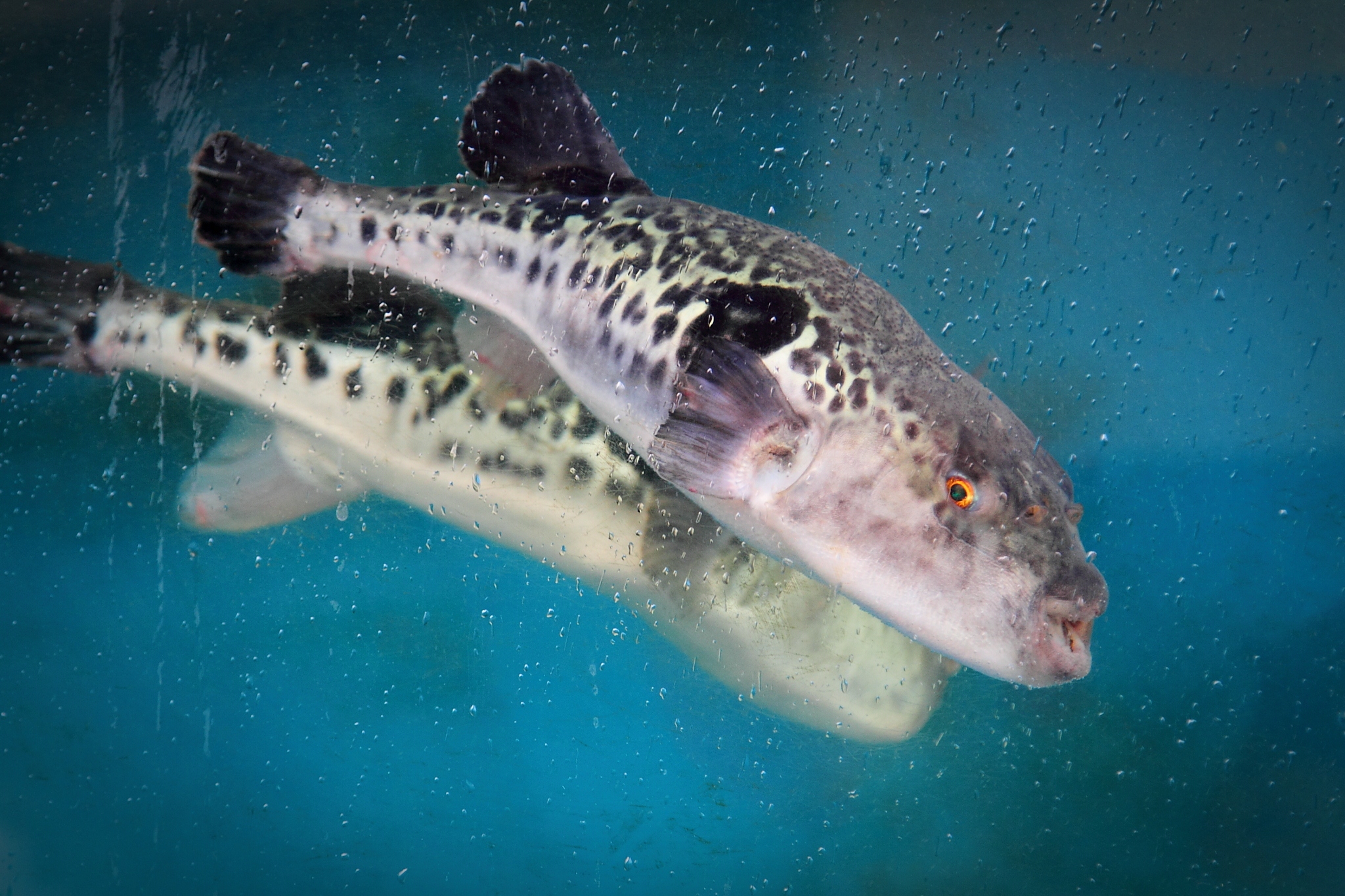

78 The lethal human dose is believed 1 to 2 mg by ingestion. 77 It affects peripheral nerves, both motor and sensory, and causes depression of medullary respiratory and vasomotor centers. The toxin binds tightly to voltage-gated sodium channels, blocking the influx of sodium necessary for conduction of action potentials. Widely recognized as the deadly substance produced by fugu, or puffer fish, tetrodotoxin works at the level of the cell membrane. Dobbs, in Clinical Neurotoxicology, 2009 TETRODOTOXIN General Characteristics
Fugu fish poison skin#
Toxicity is manifested as a tingling or prickly sensation of the fingers and toes malaise dizziness pallor numbness of the lips, tongue, and extremities ataxia nausea, vomiting, and diarrhea epigastric pain dryness of the skin subcutaneous hemorrhage and desquamation respiratory distress muscular twitching, tremor, incoordination, and muscular paralysis and intense cyanosis. Tetrodotoxin is a neurotoxin and is water-soluble and stable to boiling except in an alkaline solution. The source of tetrodotoxin comes from bacteria, especially Vibrio spp. Those toxic animals are intoxicated through the food chain. Tetrodotoxin is distributed in all the tissues, especially in the ovaries, roe, liver, intestines, and skin. Puffers are found in subtropical and tropical marine waters but can live in fresh, brackish, and marine waters. However, the toxin has been reported to be present in newts, frogs, octopus, goby fish, starfish, flatworms, xanthid crabs, and various gastropods.

Tetrodotoxin poisoning is caused by consumption of Japan fugu or puffer. Chen, in Encyclopedia of Food and Health, 2016 Tetrodotoxin

Despite these precautions, many cases of tetrodotoxin poisoning are reported each year in people consuming fugu (Source: Medical Journal, 12 June, 2001, vol.
Fugu fish poison free#
The dish is now prepared only by chefs who have been specially trained and certified by the Japanese government and can be relied upon to free the flesh of the toxic liver, gonads and skin. This disease is known as blowfish or pufferfish poisoning and is due to the neurotoxic effects of the tetrodotoxin, which occurs in various species of pufferfish. Consumption of the delicacy was banned in 1550 by the Emperor, after a group of soldiers had died, but the ban was abolished in 1888 when the Japanese Prime Minister tasted a small sample of fugu and survived. In Japan, a dish known as ‘ fugu’ is, historically, one of the most favoured and heraldic forms of fish eating Nevertheless, consumption of this food has resulted in many deaths, and the problem continues to this day. Rombouts, in Microbiological Risk Assessment in Food Processing, 2002 Eating of pufferfish


 0 kommentar(er)
0 kommentar(er)
